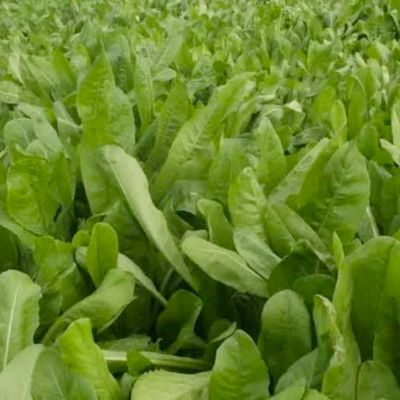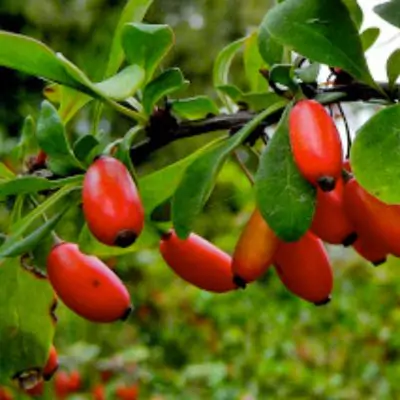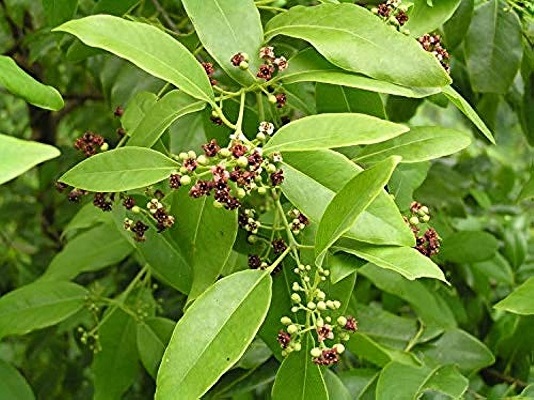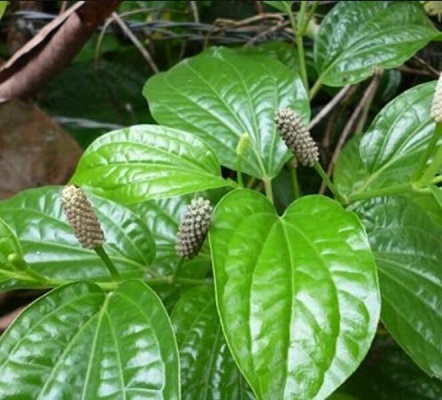On This Page
Introduction
Daruharidra is commonly known as Indian berberry or Tree Turmeric. It is an important herb used in Ayurveda. In Sanskrit it is also known as Darvi as the important part of the plant used as medicine is wood. The mainly used parts of Daruharidra are fruit and stem for medicinal purposes. The fruit is edible and is a rich source of vitamin C. Daruharidra is mainly effective for skin diseases like psoriasis as it has anti-inflammatory and anti-psoriatic activity. It also helps to remove acne. Daruharidra helps to alleviating liver disorders by maintaining the level of liver enzymes.
Dr. Gupta’s IAFA has been continuously working on Daruharidra for discovering more medicinal properties the plant. Our experts found out that the plant can act as antioxidant and anti-inflammatory, antipyretic, anti-bacterial, anti-microbial, anti-hepatotoxic, anti-hyperglycaemic, anti-cancer, antioxidant and anti-lipidemic agent. It also useful in the treatment of diarrhoea, haemorrhoids, gynaecological disorders, HIV-AIDS, osteoporosis, diabetes, eye and ear infections, wound healing, jaundice, skin diseases and malarial fever.
Action of Daruharidra (Berberis Aristata) in Allergies
IAFA has been constantly working on Daruharidra to found out the antiallergic and anti-inflammatory properties of the plant. The plant contains phytoconstituents like berbamine, Berberine, oxycanthine, epiberberine, palmatine, dehydrocaroline, jatrorhizine and columbamine etc. And these chemical constituents present in Daruharidra helps to act as a anti-allergic agent.
Vernacular Names
| Sanskrit Name | Daruharidra, Darvi |
| Hindi Name | Daruhaldi, Darhald |
| English Name | Indian berberry |
| Malayalam Name | Maramanjal |
| Kannada Name | Maradarishina |
| Telungu Name | Manupasupu |
Botanical Name
Beberis aristata
Family
Berberidaceae
Morphology of Daruharidra (Berberis Aristata)
- Erect spinous deciduous shrub
- Stem – woody
- Bark – yellow to brown from outside and dark yellow inside
- Leaves – obovate, orbicular
- Flowers – corymbose racemes, golden yellow coloured
- Fruits – ovoid
- Seeds – 2-5 in number
Ayurveda Reference of Daruharidra (Berberis Aristata)

Geographical Distribution of Daruharidra (Berberis Aristata)
It is distributed in different parts of the world. It is native to Himalaya in India. It also found in Sri Lanka, Bhutan, Nepal and America. It also grows in Nilgiris of South India.
Phytoconstituents of Daruharidra (Berberis Aristata)
The plant contains phytoconstituents alkaloids, flavonoids, triterpenes, diterpenes, anthranolglycosides, coumarins, tannins, saponins, glycosides. Berberine is an alkaloid found in the plant Daruhridra.
Parts Used of Daruharidra (Berberis Aristata)
- Root
- Bark
Dosage of Daruharidra (Berberis Aristata)
- Decoction – 50 -100 ml
Medicinal Properties of Daruharidra (Berberis Aristata)
- Sothahara – Relieves swelling
- Vedanasthapana – Relieves pain
- Vrunasodhana – Cures ulcer
- Vruna ropana – Heals wound
- Pachana – Digestant
- Grahi – Absorbent
- Raktasodhaka – purifies blood
- Varnya – improves body complexion
- Jvaraghna – Relieves fever

Have A Health Issue?
Consult Online
- Dr. Sahil Gupta (B.A.M.S., M.H.A.)
Ayurvedic Allergy Specialist
CEO & Founder of IAFA®
Home Remedies of Daruharidra (Berberis Aristata)
In Ayurveda the treatment of different kinds of diseases are done by naturally availing non toxic drugs. We are continuously working on these plants to find out its pharmacological actions. IAFA have done so many studies on the plant Daruharidra and found out that it has wide range of actions. Some of the home remedies are given below.
- Ulcer (Vruna) – Paste of bark is applied externally and remove after 20 minutes.
- Leucorrhoea (Swetha pradara) – 15 gm of wood powder is taken internally along with honey for 5 days.
- Diabetes (Prameha – 10 gm of wood powder along with paste of curcuma taken internally in the morning before food.
- Jaundice (Kamala) – 50 gm of bark of Daruharidra added with 200 ml of water, boiled and reduced to 60 ml and taken internally for 7 days.
- Diarrheoa (Atisara) – ½ tsp of powder taken along with honey after food for 3 days.
- Menorrhagia (Pradaram) – 1 tsp of powder taken internally along with 1 glass of milk for 7 days.
- Conjunctivitis (Netrabhishyandanm) – paste of Daruharidra bark is applied over eyelids and remove after 30 minutes.
- Fever (Jwara) – 25 gm of bark of Daruharidra is added with 200 ml of water, boiled and reduced to 50 ml and taken internally for 5 days.
Dr. Gupta’s IAFA provides safe, pure and non toxic Ayurvedic medicines. Our treatment protocols are completely based on Ayurvedic principles. According to Ayurveda each and every plants in the world has its own medicinal properties. Samhitas, Ayurvedic texts explains the properties and actions of almost all the plants. We are mainly focus on alleviating allergic disorders by using naturally available herbs which have less to no side effects. We can assure the safety of our customers as we are subjecting our products to various tests.
Reach IAFA for safe herbal remedies for all your ailments!!!
Was this Page Helpful?
Read More Articles
-

Kasini (Cichorium intybus)
Kasini (Cichorium intybus) commonly known as Chicory is a perennial herb, with large…
-
-








